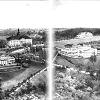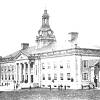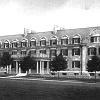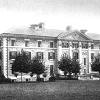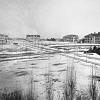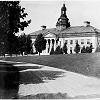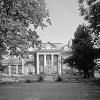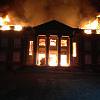Passing Through |
|
A PHP Error was encountered
Severity: Notice
Message: Only variables should be passed by reference
Filename: pages/site.php
Line Number: 13

- Also Known As:Naval Academy Preparatory School (NAPS), Susquehanna Job Corps Center, U.S. Naval Training Center
- Genre:Middle / High School, Military Installation
- Comments: 201
- Built:1900
- Opened:1902
- Age:124 years
- Closed:1990
- Demo / Renovated:N/A
- Decaying for:34 years
- Last Known Status:Being demolished or renovated

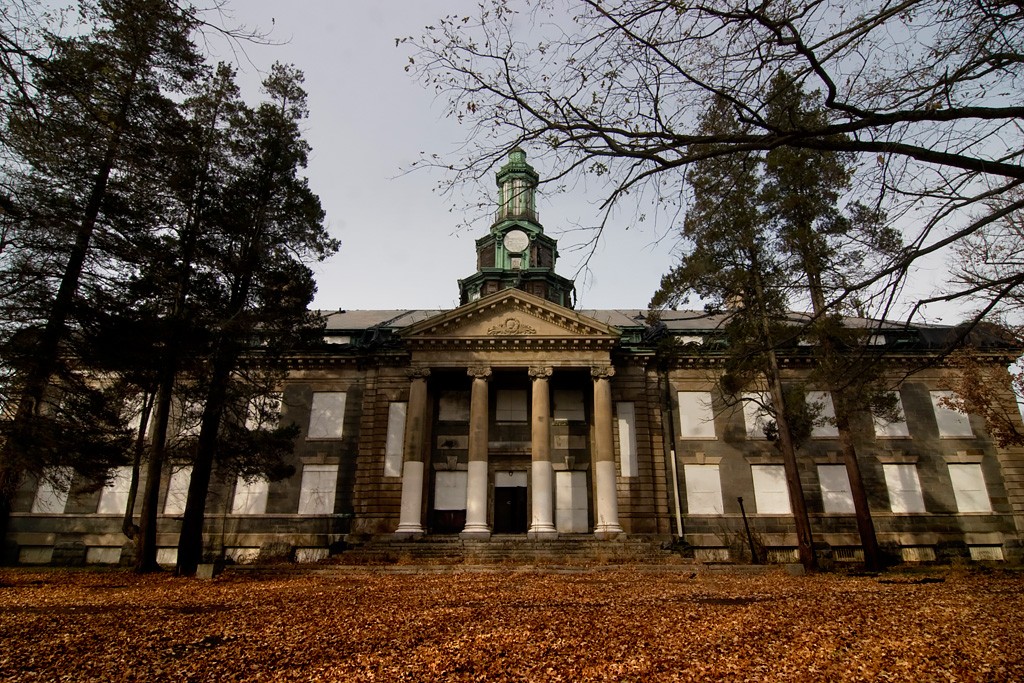
Photo © 2005 Tom Kirsch, opacity.us
Jacob Tome School for Boys (Bainbridge USNTC) History
The Tome School for Boys was originally located in the downtown area of Port Deposit, Maryland from 1894 until the founder Jacob Tome passed away in 1898. His endowment of two million dollars towards the school had paved the way for a new campus to be constructed on a 200 foot high bluff overlooking the Susquehanna river in 1900. Thirteen buildings were constructed in Beux-Arts influenced Gregorian Revival style by N.Y. architects Boring and Tilton, just after they had finished the award-winning Ellis Island Immigrant Station (which, coincidentally, had spent a considerable amount of time abandoned as well). The later additions of fire escapes and the replacement of doors and roofing did not alter the design of the Tome School buildings significantly. The original school buildings, built of local Port Deposit granite, included three boarding houses, an indoor swimming pool, batting cages, gymnasium, theater, dining hall, hotel for guest speakers and visitors, and the main building, Memorial Hall. The 330 acre campus, whose design was supervised by Frederick Law Olmstead (also designer of the Buffalo State Asylum grounds), included ornate Italian gardens in a center square, surrounded by scenic tree-lined drives.
The facility was planned as a non-sectarian college preparatory school - one of many which were flourishing in the early 20th century. It earned a prestigious reputation, accepting affluent young adults such as the children of the Mellon and Carnegie families. Base tuition was $700 with no extras in the year 1909.
The school's finances dwindled over time however, and by 1942 the institution had moved back to its original campus in town. The bombing of Pearl Harbor in December 1941 had begun a race to construct new training centers across the Unites States, and luckily for the school, the property was eagerly eyed by both the Army and Navy. The government purchased the school and an adjacent 50 parcels of farmland to create a massive 1,132 acre campus that was to become the Bainbridge U.S. Naval Training Center - named in honor of Commodore William Bainbridge. Five hundred buildings were hastily constructed to train new recruits for World War II, and the center opened a scant four months after construction had started. With a peak population of 38,000 personnel, the facility actually doubled Cecil county's population. New amenities included an outdoor amphitheater, indoor swimming pool, 500-bed hospital, nuclear power school, fire fighters school, and a variety of classrooms, barracks and mess halls - all at a price tag of about fifty million dollars. The school prepared over 350,000 sailors for battle in World War II.
The campus was deactivated in 1947, at the end of the second World War. A skeleton maintenance crew remained behind to protect the buildings from deterioration until it reopened in February of 1951, during the advent of the Korean War. Although the buildings were maintained on a basic level, a substantial amount of repair work needed to be done throughout the first year. Then, the facility operated again as a Naval Training Center until the operation was mothballed in mid-1950s.
A number of operations continued at the campus however, such as the Naval Academy Preparatory School (NAPS, residing in the old Tome School buildings), Pami Conus (Personnel Accounting Machine Installation, Continental United States), a WAVE (Women Accepted for Volunteer Emergency Service) recruitment center, a nuclear power school, the Naval Reserve Manpower Center, and a plethora of other military training schools and facilities. Although the site was bustling with activity for a number of years, the individual schools began to close their doors one by one. On March 31st 1976, the entire base and campus was officially shuttered; an estimated total of over 500,000 sailors were trained at Bainbridge.
The Susquehanna Job Corps Center operated inside a few of the old Tome school buildings for some time after, but the rest of the military-built campus, more akin to an abandoned city, was subject to constant arson, vandalism, and theft. Almost all the buildings constructed by the government were demolished during a lengthy cleanup process; the asbestos and lead tainted rubble was pushed into a ravine along the Jacob Tome Highway, leaving a handful of remaining structures.
By 1990, the job corps moved out, and the old Tome School buildings were subjected to decay and arson. In 2000, the land was transferred to the Bainbridge Development Corporation, who is developing the campus into a mixed-use community. The remaining granite buildings have been stabilized and were being redeveloped into a continuous care facility; however on September 14, 2014 Memorial Hall was burned to the ground.
A number of websites are dedicated to preserving the memory of Bainbridge, including the USNTC Bainbridge Association and Pami Conus.

